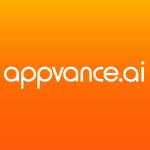How has it helped my organization?
The best benefit would be budget. It's a really inexpensive if you are testing your application every spring or every month. Even for less frequent applications that you have to test regularly. You can hook up your infrastructure to StormRunner Cloud and you can get the best of both worlds.
In larger enterprises, we have different departments using Performance Center and StormRunner or Selenium. So, StormRunner can act like an umbrella and plug-in everything, get it executed or done across the world. Since they use both HPE Cloud, AWS, and Microsoft, it uses more access points geographically to test it making it best of the class.
What is most valuable?
StormRunner itself is a pretty good hybrid product of Performance Center. Keeping up with DevOps, thus the best feature of StormRunner is that we don't have to build and maintain infrastructure anymore. Whenever we have to test lab scale applications, and in a scenario where we don't have to test every day, we don't have to build the machines and pay for it. Instead, we can get the infrastructure from on-demand from StormRunner, and its ability to run it anywhere just by opening it in browser is the best part. The evolution of StormRunner starting with supporting LoadRunner along with the open source technologies like JMeter and Selenium. Their unit testing tools are actually very advanced in the region of the product. That's why I would recommend anyone to use StormRunner, even though something is not supported now, eventually it's going to be supported by StormRunner. That's the kind of credibility that's needed for any customer when it comes to relying on a product or going for a new product.
What needs improvement?
More insight into test results and allowances. It might be a tailor-made requirement for me, but I would like to download them offline and do my own customizations on the reports. Right now, we have some standard templates that generates reports. But if I had to do some customizations, include something else and create a report, it's not easy. So, if I can an order to download the raw data I can make custom report. That would be the case with every customer because even though they tested one product it might be part of a big project and they need to have other information included in it along with the report, so feasibly it is good to have.
Also, it's evolving, where there's too many features for me to handle and it's too much on my plate to any make ROI out of it.
There is a steep learning curve for the product, too.
What do I think about the stability of the solution?
Over the last couple of years, it's been evolving. We started using more in the last one year and we see it's pretty stable. Adding new features to StormRunner is going to slow down once it has every feature. That has to do with stability and I don't see any drawback in that.
What do I think about the scalability of the solution?
We haven't really hit any scalability issues by using StormRunner, but I just now heard that they can support two million users, which is kind of astonishing. The max I have used is 40,000 users, but two million is good, too. It's big step up from 40,000.
At the same time, you don't have to get the infrastructure built and set it up. For example, let's say you had to test it for one million users. You don't have to procure all of the machines you need for the one test you're going to do. You can do it on demand, that's the best thing. Two million is still very much overboard, but it's good to know. It's good to know that there's no limitation nearby.
How are customer service and technical support?
I'm not a big fan of the tech support to be frank. SaaS tech support (HPE tech support or Micro Focus), there's a gap between the people who access our tickets and the people who know the product. So, there is always a blind exchange of information within Micro Focus and most of the time get frustrated with the kind of ticket updates we get. What happens is the person handling the ticket might not be an expert in the product so we end up redoing everything. Communicating everything about our setup and infrastructure and the customer engagement for each ticket. Therefore, we started involving our technical correspondent with Micro Focus, but we're told that it's a pretty messy situation over there.
Which solution did I use previously and why did I switch?
I always thought it would be good to have something like this from HPE because we rely a lot on HPE. Then, StormRunner was released and I knew where exactly it was going and what's it would be for us.
How was the initial setup?
I was involved in the initial setup. It was straightforward and there was a lot of good information available, but I did not need it. I didn't go through any support to set it up. The documentation itself was good.
Which other solutions did I evaluate?
The other product we considered was BlazeMeter. We eventually chose StormRunner. I think only those two are pretty much in the market - nothing else.
What other advice do I have?
I like that StormRunner incorporates the idea of accepting and adapting all open sources. It is my understanding that they are planning to continue accepting, supporting, and adapting all open sources.
For someone evaluating StormRunner and similar products, there are two parameters I would tell him to evaluate:
- Is the application under test? Is it customer facing?
- Is how often do you test it?
Most important criteria when selecting a vendor: We are a retail business. The first thing I look for is any customer use case, or case study for the vendor. I look to see if they have proven that they are good resource for any existing retail customers. I look for any kind of case study in those lines before I jump in.
Disclosure: I am a real user, and this review is based on my own experience and opinions.




















